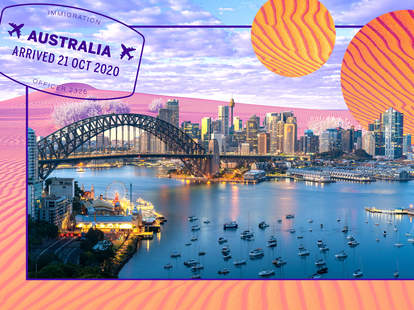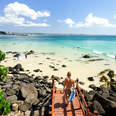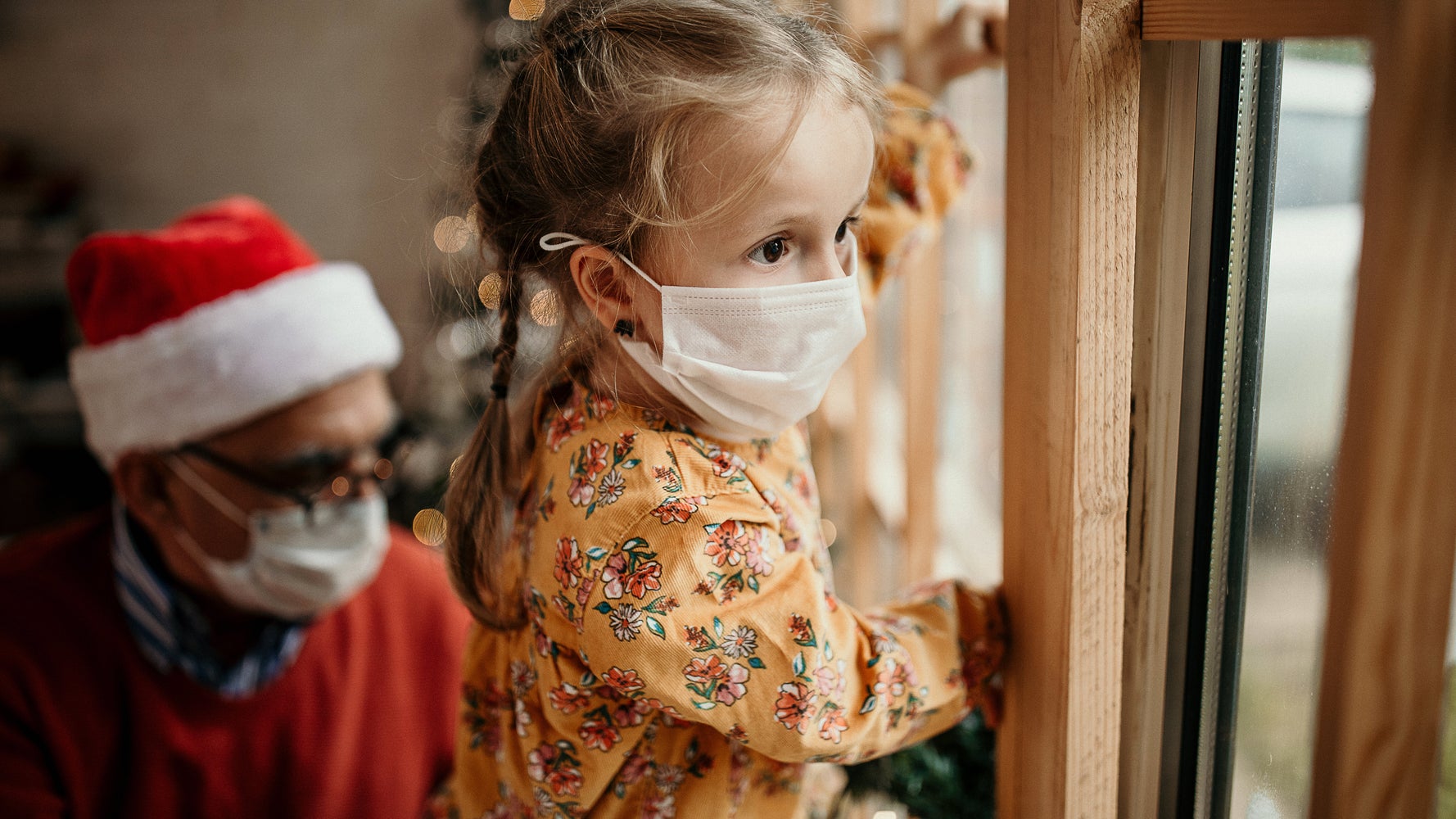Explore the world’s best beaches. Maybe befriend koalas.

In January of 2018, I did the unthinkable: left my full-time editor job and swanky NYC apartment, sold or donated everything I owned, and began my digital-nomad adventure. After backpacking around Southeast Asia for two months, I managed to spend an incredible year in Australia on the Working Holiday Visa.
In Darwin, I worked as an usher at a performing arts center, where I was paid to watch Broadway shows for free. I scored a gig as a movie extra and a dream job updating a guidebook, which led to a two-month solo road trip through the Australian Outback. In Melbourne, I got a ticketing job at Australia’s oldest theme park, Luna Park, then used the money to visit Tasmania and Adelaide before beginning my Working Holiday Visa year in New Zealand.
It was the greatest adventure of my life. And if you’re an American age 18-30, you could follow suit. While the COVID-19 pandemic has caused all visas and applications to be suspended indefinitely, you can still use the information below to plan your own Working Holiday Visa trip for when Australian borders reopen.

American? Under 30? Australia’s calling.
If you fit the criteria of being both American and under 30, you can apply online for the Working Holiday Visa (subclass 462) as long as they pay $485 AUD ($345 USD) and submit any requested documents. Just make sure you’ve got a rough idea of your travel dates, as you’ll have exactly 12 months to enter Australia from the day you’re approved, and your visa clock starts as soon as you get there.
There are a few catches. You won’t be able to take on any full-time work, and are only able to stay with one employer for up to six months. If you have any kids, they’ll have to stay home. While there’s not necessarily a financial requirement, make sure you have enough in your bank account to cover any accommodations, food, and transportation between jobs.
If you won’t be turning 31 before your first WHV year ends, doing certain types of work for three months during your first WHV year makes you eligible to apply for a second year , as long as you also pay the $350 fee again. If you complete six months of specified work during your second WHV year, you’re then eligible to apply for a third WHV year.
Pay close attention to specified work requirements for subclass 462 (not subclass 417). You’ll have to work for at least 88 days in a specified regional area or anywhere north of the Tropic of Capricorn, and all qualifying jobs must be in the agricultural, fishing, farming, pearling, tree felling, construction, bushfire recovery, or tourism and hospitality industries. As of January 2020, any work done in the health or medical fields anywhere in Australia as a result of COVID-19 also counts toward extending your visa.

How to find work
Check GumTree (Australia’s version of CraigsList), SEEK , and Backpacker Job Board for job listings, which can also be found in backpacker groups on Facebook. If you’re staying in a hostel, keep an eye out for ads posted in the common areas. Score casual gigs by signing up for apps like SideKicker , or just go old-school—it’s the Australian way—and show up at places you want to work with a resume in hand. The Australian Government’s Job Search app is also a great resource, as is the Harvest Trail if you’re looking for farm work to extend your visa.
If you’re a fan of the barter system, sign up for WWOOF or WorkAway, which will let you spend a certain amount of hours each day volunteering on an organic farm, cleaning the hostel, or serving as an au pair in exchange for meals and a place to stay. Note that because these opportunities are unpaid, they won’t count toward a WHV extension.
Another way to save big is by house or pet sitting. Aussies love to travel for long periods of time, so you could end up staying a few weeks in one city for free by signing up for a listing service like Aussie House Sitters.—I had a great time and saved a lot of money taking care of people’s pets all over the Melbourne area.

More visa options to consider
If you’re under 45, there are plenty of other visa options to consider, though everything’s paused right now because of the pandemic. These are usually more expensive and some require an Australian sponsor, so make sure you read all the fine print before you apply. Eligibility is typically based on your work experience, education, and other qualifications. You can also study in Australia for up to five years if you pay the $620 AUD ($444 USD) fee and are enrolled in an approved educational program.
If you’re a digital nomad, just visit as a tourist and work remotely
If you’re over 30 but still want to try living abroad in Australia for a few months, there aren’t any rules saying you can’t just enter the country as a tourist and do your “workation” or digital nomad adventure quietly. Apply online for an electronic tourist visa for $20 AUD ($14 USD) before you go, then you’ll be allowed to stay for up to 90 days.
You can also leave and re-enter the country as many times as you like during the one-year period your visa is valid, so this is your chance to plan a visa run to neighboring New Zealand or your choice of beautiful South Pacific islands.

The best places to live and work in Australia
While you’ll generally want to stick to farms and remote hospitality gigs if you’re trying for a visa extension, it’s also a good idea to be based in more urban areas. The 10 cities listed below are extremely walkable, have efficient public transit systems, and are easily connected to other parts of the country by bus, train, or a short flight. Hostels can also be a great alternative to renting apartments in Australia, as many of them offer free Wi-Fi and special discounts for long-term stays.
Sydney : There’s more to Sydney than its famous Opera House and Harbour Bridge. With rents averaging $1,327 to $1,874 a month for a one-bedroom flat, it’s pricey, but worth it for its proximity to Bondi Beach and Manly Beach, and the chance to be part of its thriving international community. With its wealth of air, bus, and train connections, Sydney’s a great city to be based in while you figure out where else you want to go in Australia.
Melbourne : With world-class museums, a happening food and nightlife scene, and its proximity to the Great Ocean Road, Melbourne’s a popular choice for digital nomads and WHV types who want to live in a busy city by the bay. A one-bedroom flat here goes for between $1,012 and $1,322 a month, and the city’s nifty tram system lets you ride for free within the CBD (central business district).
Brisbane : While this bustling city along the Queensland coast is slightly smaller than Sydney and Melbourne—its population is about 2.4 million vs. their 4.9 million, respectively—it still packs a punch with plenty of popular bars, restaurants, and coffee shops. Rents for a one-bedroom here average $889 to $1,212 a month, making it a more affordable option for those who still want classic big-city vibes.
Cairns: If you want to work and live near the Great Barrier Reef, Cairns is a great base, with rents for a one-bedroom averaging $835 to $952 a month and Daintree National Park—home of the world’s oldest rainforest—Port Douglas, and other Tropical North Queensland attractions just a few hours’ drive away.

Hobart : Tasmania’s capital is a lively seaside city with old-timey pubs, fascinating museums, and day trips to Mount Wellington, Port Arthur, Bruny Island, Freycinet National Park, and Wineglass Bay to keep you busy. Rents for a one-bedroom here run anywhere from $835 to $1,036 a month.
Adelaide : Adelaide’s downtown is full of local markets, Outback-style pubs, and festival fairgrounds—Adelaide Fringe is the second-largest annual fringe festival in the world after Edinburgh’s. It’s also close to some of the best wine regions in South Australia, including Barossa Valley, Clare Valley, and the McLaren Vale. Best of all, rents for a one-bedroom apartment average $717 to $977 a month.
Perth : With rents ranging from $743 to $1,068 a month for a one-bedroom flat, Perth’s a fantastic option for those seeking a big city by the beach. Day trip to the Swan Valley and Margaret River wine regions, visit the quokkas on Rottnest Island, or stock up before a larger road trip to more remote parts of Western Australia.
Broome : While most digital nomads visit Broome during a longer road trip to the Kimberley region, WHV folks flock here for its legendary pearling industry. It’s also popular among those seeking work in tourism and hospitality in nearby Cable Beach, with rents for a one-bedroom averaging $1,250 a month.
Darwin : Rents in the Northern Territory’s capital average $818 to $974 a month for a one-bedroom. Day trip to Kakadu National Park, Litchfield National Park, or Nitmiluk National Park (Katherine Gorge), then visit the Mindil Beach Sunset Markets and dance to live music at your pick of pubs along Mitchell Street.
Alice Springs: Located about a five-hour drive from Uluru-Kata Tjuta National Park (Ayers Rock) in the heart of the Red Centre, Alice Springs is your quintessential Outback town, with a lively pub scene, kitschy museums, and lots of scenic hiking spots. One-bedroom apartments here average $865 to $1,803 a month depending on how far you venture from the city center.





